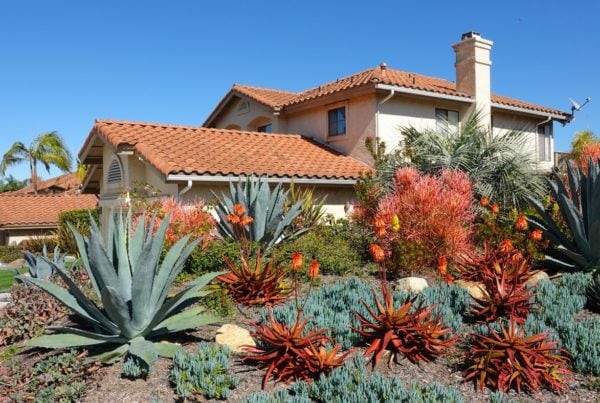Welcome to the wonderful world of xeriscaping, where beauty meets sustainability. We explore the concept of xeriscaping and how it can help you create water-wise landscapes in dry climates.
Whether you’re on the Colorado front range or any other region dealing with water scarcity, xeriscaping offers a practical and eco-friendly approach to gardening. By conserving water and reducing the need for excessive irrigation, xeriscaping helps preserve our precious resources and creates stunning landscapes that thrive even in arid conditions.
Understanding Xeriscaping
Xeriscaping is all about reducing water consumption while maintaining an awesome outdoor space. It’s a landscaping technique rooted in water conservation, drought tolerance, and sustainable gardening practices. The term “xeriscaping” itself combines “xeri,” which means dry, with “landscaping,” emphasizing its suitability for dry climates.
Assessing the Site and Soil
Before diving into your xeriscaping project, it’s crucial to assess your site and get to know its unique characteristics. Things like sunlight exposure, soil type, slope, and drainage patterns play a huge role in determining the success of your xeriscape. By considering these factors, you can make informed decisions about plant selection, irrigation methods, and overall design, ensuring your landscape thrives in its specific environment.
Water-Efficient Design
Designing a water-efficient landscape is a key aspect of xeriscaping. It involves some thoughtful planning and consideration of various factors. Strategies like grouping plants with similar water needs, creating efficient irrigation zones, and adding cool hardscaping elements such as pathways and rock gardens can help minimize water loss and maximize every drop.
Selecting Drought-Tolerant Plants
Picking the right plants is essential for a successful xeriscape. Drought-resistant plants are the rockstars of water-wise landscaping. They can handle dry conditions like champs and require minimal watering.
Opting for native plants and those adapted to the local climate is a smart move since they’ve evolved to thrive in the specific conditions of your region. By embracing a diverse range of drought-tolerant plants, you can create a vibrant and resilient xeriscape that’s bursting with life.
Mulching and Soil Conservation
Mulching and soil conservation are key players in the xeriscaping game, contributing to water conservation and the overall health of your plants. Tossing organic mulch around your plants, like wood chips or straw, helps retain soil moisture, suppress pesky weeds, and keep the soil temperature right. And let’s not forget about improving soil quality! Techniques like adding organic matter and using appropriate fertilizers can enhance water retention capacity and give those roots a healthy boost.
Efficient Watering Techniques
Watering is a big deal in xeriscaping, and using efficient techniques can save you a ton of water. Drip irrigation systems, soaker hoses, and smart irrigation controllers are your secret weapons. They allow you to deliver water directly to the roots, minimizing wasteful evaporation and runoff.
Oh, and don’t forget to adjust your watering schedules based on plant needs and weather conditions. It’s all about being smart and optimizing your water usage.
Maintaining a Xeriscape
Proper maintenance is key to keeping your xeriscape in tip-top shape. Regular tasks like weeding, pruning, and keeping an eye on your irrigation system ensure that your landscape remains healthy and sustainable. Remember to replenish mulch as needed, run periodic soil tests, and adjust watering schedules as your plants mature. Taking good care of your Xeriscape ensures it will flourish and stand the test of time.
Spreading the Word and Inspiring Others
As a Xeriscape enthusiast, you have the power to inspire others and make a positive impact on your community. Share your xeriscaping journey with friends, neighbors, and local gardening groups. Organize fun workshops, community events, or lively online forums to educate others about the amazing benefits of xeriscaping and show them how to bring it to their landscapes. By spreading the word, you can encourage more people to embrace sustainable landscaping practices and join the water conservation movement.
Xeriscaping is a practical and visually stunning solution for dry climates like Colorado. By incorporating water-wise landscape design principles, selecting the right plants, and using efficient irrigation methods, you can create a beautiful, sustainable landscape that thrives even in water-scarce regions.
When it comes to bringing your xeriscaping dreams to life, look no further than RMPS Landscaping in Castle Rock. Their expertise and dedication make them your go-to landscaper, ready to transform your outdoor space into a breathtaking oasis. So, let’s join forces, conserve water, preserve the environment, and together, with the help of RMPS Landscaping, create landscapes that inspire and endure.
Common Questions on Xeriscaping
What are the benefits of xeriscaping?
Xeriscaping offers a bunch of awesome benefits! It reduces water consumption, lowers maintenance requirements, increases drought tolerance, and enhances environmental sustainability. You’ll save water, cut down on water bills, and lighten the burden on water supplies in dry climates. Plus, your landscape will look fabulous!
Are there any financial incentives for xeriscaping?
You bet! Many municipalities and water utilities offer cool financial incentives or rebate programs to encourage xeriscaping. These incentives can include grants, discounts on water-efficient products, or rebates for transforming traditional landscapes into xeriscapes. Make sure to check with your local authorities or water provider to see what incentives are available in your neck of the woods.
Can xeriscaping work in any climate?
While xeriscaping is a great fit for dry climates, its principles can also be applied in different climatic regions. You just need to adapt the techniques and plant selection to suit the environmental conditions of your area. In cooler or more humid climates, the focus might be on reducing water usage and incorporating native plants adapted to the local conditions.
Will xeriscaping attract pests or wildlife?
Not necessarily! When done right, xeriscaping doesn’t attract more pests or wildlife than traditional landscapes. You can keep those pesky pests in check with proper design, plant selection, and maintenance practices.
And hey, xeriscaping can even bring in some beneficial wildlife! Adding bird feeders, butterfly-friendly plants, or pollinator gardens can create a thriving ecosystem within your xeriscape.
How long does it take for a xeriscape to establish?
The establishment period for a xeriscape can vary depending on factors like plant selection, soil conditions, and climate. Generally, you’re looking at about one to three growing seasons for your xeriscape to establish and show off its beauty fully. Just remember to provide regular watering, weed out the bad stuff, and keep up with maintenance to support your plants’ growth and ensure long-term success.
Can I convert my existing landscape into a Xeriscape?
Absolutely! You can totally transform your existing landscape into a xeriscape. The level of transformation needed will depend on your current design, plant selection, and irrigation system.
Take it step by step, making water-efficient design modifications, replacing water-loving plants with drought-tolerant species, and upgrading your irrigation system. With time, your landscape will proudly embrace the xeriscape lifestyle.





